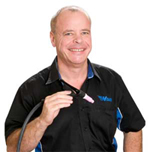01908 6998020845 899 4400 | 01908 699802Tel 01908 699802
Weld Distortion and Defects


Weld Distortion and defects are an annoying, but unavoidable part of welding. But they can be mitigated!
Porosity
Porosity is where Holes/Bubbles appear in the weld. This is created when gas becomes trapped in the weld pool as it solidifies. Causes include:
- Lack of shielding gas – (Mig/Mag & Tig Welding) INCREASE GAS FLOW.
- Too much shielding gas – (Mig/Mag & Tig Welding). If the flow rate of gas is too high, turbulence is created over the weld. This turbulence allows air to penetrate the gas shield. This then means you don’t have an adequate gas shield around the weld pool. REDUCE GAS FLOW.
- Damp Welding Rods – (MMA). USE DRY WELDING RODS.
- Oil/Grease/Rust etc on the workpiece – As suface contaminates burn off they create excess gas. This gas can then get trapped in the weld, resulting in holes. CLEAN WORKPIECE BEFORE WELDING.
- Surface coating on the workpiece – Paint or plating burning off will create excess gas (same as 4), which then gets trapped in the weld. REMOVE SURFACE COATING BEFORE WELDING.
Poor Welds
- Tall Narrow Welds – Caused by a lack of heat input or travelling too fast. INCREASE POWER or SLOW DOWN.
- Flat Wide Welds – Caused by excessive heat input, or travelling too slowly. REDUCE POWER or SPEED UP.
- Undercut – Caused by excessive heat input. REDUCE WELDING POWER.
- Slag Inclusion – (Arc Welding and Gasless Mig only). Primary cause is slag from a previous weld not being fully removed before second weld pass is overlaid. Undercut will make slag removal more difficult and increase the risk of slag inclusion. REMOVE ALL SLAG PRIOR TO OVERWELDING.
Weld Distortion
Weld Distortion is caused by two factors:
- The general uneven heating of the workpiece that welding causes.
- The weld metal itself shrinking.
The first is impossible to avoid, but can be mitigated:
- Ensure all joints are as tight as possible.
- Use the best process for the job (Mig, Tig MMA etc).
- Use no more welding power than is necessary.
- The idea is to minimise the heat input.
Weld Metal Shrinking is, again, impossible to avoid.
When a weld is created you’re producing a molten pool of metal. Like most materials, this hot metal will be in an expanded state. Thus, as it cools and solidifies, it contracts (or shrinks).
As the weld metal cools and shrinks it pulls on the metal around it, creating stresses and distortion.
Welding Distortion can be corrected by stretching the weld metal to relieve the stress caused by shrinking.
For butt and outside corner welds, this can be done by peening.
Do this by holding a metal block behind the weld and peening evenly along the weld with a hammer.
Be careful to avoid over peening as this will overstretch the weld and re-distort the workpiece, this cannot be corrected easily!!!
So peen the whole weld a little, assess the effect, then if necessary, peen a little more.
Conclusions
Most Weld Distortion and Defects that You’ll encounter can be avoided, simply by preparing properly.
Distortion can be minimised by ensuring metal parts fit tightly together as gaps will mean bigger weld deposits and therefore more weld shrinking!
So a bit of time spent on preparation can minimise the time spent fixing Weld Distortion and Defects after welding!
I hope you found this blog article useful.
Please let me know what you thought by leaving a comment.
Don’t worry, your email address won’t be added to a database or shared and you won’t receive any unsolicited email.
Cheers
Graham


Hello, I’ve asked before but lost the link to the page. I have only previously welded with Oxy Accetylene but what is now considered the best for welding thins monocoque chassis? I have Honda CRX which needs somoe welding underneath. The chassis is obviously not very clean and the steel quite thin. So not sure if Oxy, Mig or Tig would be best. Look forward to hearing, manu thanks Nigel
Hi Nigel
Oxy/Acetylene is the best for welding thin, steel that’s not in great condition, however, Mig is easier to use and the preferred method for most. Getting the metal as clean as possible would be a BIG help.
Our BlueMig iMig 160 is proving VERY popular for DIY car restoration.
Hope that helps
Cheers Graham